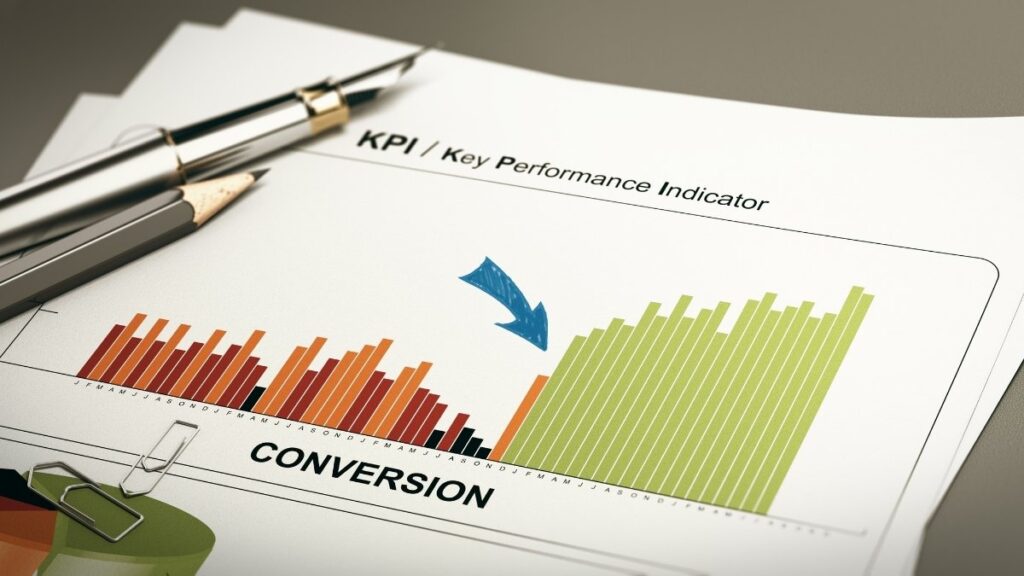
On July 4, 2025, President Trump signed the One Big Beautiful Bill Act (OBBBA), fundamentally changing the tax landscape and creating a narrow window for strategic planning through 2028.
Most taxpayers don’t realize the Tax Cuts and Jobs Act (TCJA) sunset was avoided, but critical temporary provisions expire in just three years. Missing these tax planning strategies 2025 opportunities could cost tens of thousands in unnecessary taxes.
This guide shows you how OBBBA changed tax law permanently and temporarily, seven specific strategies to reduce your lifetime tax burden, which temporary tax deductions expire in 2028 versus permanent changes, and actionable steps to implement before year-end 2025.
7 Smart Tax Strategies After the OBBBA Changes
You’re paying too much in taxes. That’s the simple truth for most Americans right now.
But on July 4, 2025, something changed. The One Big Beautiful Bill Act (OBBBA) passed, and it created new ways to keep more of your money. Some of these tax breaks will disappear after 2028. Others are here to stay.

This guide shows you exactly what to do. No confusing jargon. Just clear steps you can take right now to lower your tax bill.
Understanding OBBBA: What Changed on July 4, 2025
Here’s what you need to know. The tax cuts from 2017 were set to expire in 2026. If that happened, your taxes would have gone up. Way up.
More than $4 trillion in tax increases would have hit 62% of U.S. households. That’s almost two out of every three families paying more. OBBBA stopped that from happening.

What Became Permanent
The individual tax rates are now locked in forever. Your tax bracket stays at 10%, 12%, 22%, 24%, 32%, 35%, or 37%. These rates won’t change when you’re planning for next year or ten years from now. No more worrying about expiration dates.
The Estate Tax Game Changer
Starting in 2026, you can transfer $15 million per person without paying federal estate tax. That’s $30 million for married couples. This increase is permanent, with adjustments for inflation each year. Before OBBBA, this exemption was set to drop dramatically in 2026.
Temporary Wins You Can’t Ignore
OBBBA created several deductions that only last from 2025 to 2028. These include breaks for tips, overtime pay, seniors, and auto loan interest. You need to use them before they vanish. Think of these as bonus rounds in a video game. They won’t last forever.
SALT Cap Relief (For Now)
The state and local tax deduction cap increased to $40,000 for 2025. It will grow by 1% each year through 2029. Then it drops back to $10,000 in 2030. If you live in a high-tax state, this gives you breathing room for five years.
The Price Tag
According to the Congressional Budget Office, OBBBA will cost about $3.2 trillion over ten years. That’s money staying in taxpayers’ pockets instead of going to Washington.
The big picture? You now have permanent tax stability plus temporary bonus deductions. Smart planning means grabbing the temporary stuff now while using the permanent changes to plan your financial future.
Strategy #1: Maximize the No Tax on Overtime Deduction (2025-2028)
Do you work overtime? You just got a tax break.
From 2025 through 2028, you can deduct the premium portion of your overtime pay. That’s the extra “half” in time-and-a-half pay. You can deduct up to $12,500 if you’re single or $25,000 if you’re married filing jointly.

How the Math Works
Say you earn $90,000 a year. Your regular rate is $40 per hour. You work 200 hours of overtime this year at $60 per hour (time-and-a-half). That’s $12,000 in overtime pay.
The premium portion is $20 per hour (the extra half). Multiply that by 200 hours and you get $4,000. That’s your deduction. It reduces your taxable income by $4,000, which could save you $880 to $1,480 in taxes depending on your bracket.
Who Gets It
This works for W-2 employees and independent contractors. Both get the same benefit. You don’t have to pick between one job type or another. The IRS doesn’t care how you earn your overtime, just that you earn it.
Income Limits You Need to Know
The deduction starts to phase out at $150,000 of modified adjusted gross income for individuals. For married couples filing jointly, it’s $300,000. If you earn more than that, your deduction gets smaller until it disappears completely.
What Your Employer Must Do
Your employer needs to report your overtime pay differently on your W-2. They must show the premium portion separately. The IRS requires employers to make these payroll adjustments by December 31, 2025. If your company hasn’t updated their system yet, ask your HR department about it.
The Reclassification Trend
Something interesting is already happening. Some employers are reclassifying certain exempt employees to nonexempt status. Why? So those employees can qualify for overtime and get this tax break. If you’re currently exempt and work extra hours, talk to your employer. This change could benefit both of you.
Special Rules for Contractors
Independent contractors have different reporting requirements. You’ll need to calculate your overtime premium yourself and report it properly on your tax return. Keep detailed records of your hours and rates. The IRS won’t have a W-2 to verify your numbers.
Why This Deduction Is Better
This is an “above-the-line” deduction. That means you don’t have to itemize to claim it. You get it even if you take the standard deduction. Easy money.
The clock is ticking on this one. You have four years to benefit from this break. Make the most of it.
Strategy #2: Capture the Tips Deduction While It Lasts
Work in a job where you get tips? Good news.
You can now deduct up to $25,000 of qualified tips you receive. This applies to occupations that customarily and regularly receive tips.

What Tips Qualify
The tips must be voluntary. They can be cash tips or tips charged on a credit card. They have to come directly from customers. A mandatory service charge doesn’t count. The IRS is strict about this. Real tips only.
The Waiting Game
There’s a small problem right now. The IRS has to publish an official list of qualifying occupations by October 2, 2025. We don’t have that list yet. Based on the law, it will include servers, bartenders, hairstylists, taxi drivers, and similar jobs. If you regularly receive tips, you probably qualify.
Income Phase-Outs
Same phase-out rules apply here. The deduction starts shrinking at $150,000 modified adjusted gross income for singles and $300,000 for married couples filing jointly. If you’re married filing separately, you can’t claim this deduction at all. The IRS gave that filing status zero benefits here.
Real Money in Your Pocket
Let’s look at a real scenario. You’re a server earning $50,000 in base wages plus $20,000 in tips. You can deduct the full $20,000 in tips. If you’re in the 22% tax bracket, that saves you $4,400 in federal taxes. That’s real money back in your pocket.
The Four-Year Window
This deduction runs from 2025 through 2028. Like the overtime break, it’s temporary. Four years and it’s gone. Congress could extend it, but don’t count on that. Use it while you have it.
Reporting Still Required
You still have to report all your tips to your employer. Nothing changes there. The IRS already requires you to track and report tips. This new law just lets you deduct them when you file your return. Don’t think this is permission to hide tips.
Documentation Is Critical
Keep good records. Document every tip you receive. Your credit card processing statements help prove charged tips. For cash tips, keep a daily log. You’ll need this documentation if the IRS ever asks questions. Audits happen. Be ready.
Employer Help
Some restaurants and service businesses are updating their payroll systems to help employees track this. Ask your employer if they’re providing any tools or reports to make this easier. Good employers will help you maximize this benefit.
If you work in the service industry, this could be your biggest tax break in years. Don’t miss it.
Strategy #3: Execute Roth Conversions at Stable Low Rates
Want to pay less tax over your lifetime? Roth conversions just got better.
OBBBA made the TCJA tax brackets permanent. That means the 10%, 12%, 22%, 24%, 32%, 35%, and 37% rates aren’t going anywhere. This stability makes Roth conversion planning much easier.

The Basic Strategy
You have money in a traditional IRA or 401(k). That money will be taxed when you take it out in retirement. A Roth conversion means you move that money to a Roth IRA now and pay the taxes today.
Why would you want to pay taxes now? Because you lock in today’s rates. And money in a Roth IRA grows tax-free forever. You never pay taxes on it again. Not when it grows, not when you take it out.
Why Certainty Matters
Before OBBBA, these low rates were set to expire in 2026. That made conversions risky. You didn’t know what rates would be in future years. Now you do. That uncertainty is gone. You can plan with confidence.
Fill Your Bracket
The strategy is simple. “Fill up” your current tax bracket with conversions. Pay taxes at your current rate, but don’t push yourself into the next bracket.
Let’s say you’re married filing jointly with $250,000 in annual income. The 24% tax bracket goes up to $383,900 for couples in 2025. That means you have about $133,900 of “room” left in the 24% bracket.
You could convert $133,900 from your traditional IRA to a Roth IRA. You’d pay 24% tax on that conversion. But you’d avoid jumping to the 32% bracket. And all future growth on that converted money is tax-free.
The Payment Method That Multiplies Your Benefit
Pay the conversion taxes from your regular bank account or brokerage account. Don’t use money from the IRA itself. If you use IRA money to pay the taxes, you’re wasting part of your tax-free growth potential. This is huge. It’s the difference between good planning and great planning.
Multi-Year Approach
Many financial advisors suggest spreading conversions over several years. You might convert a chunk in 2025, another chunk in 2026, and so on through 2028. This keeps you in lower brackets each year while moving significant money to Roth status.
Timing Based on Your Life
Consider your retirement timeline. If you’re in your 50s or 60s and expect to be in the same or higher tax bracket in retirement, conversions make sense. If you expect to be in a much lower bracket, they might not.
Low-Income Year Opportunities
Roth conversions work especially well if you have a year with lower income. Maybe you retired early or took a sabbatical. Your tax bracket is temporarily lower. Convert as much as possible that year. This is your golden opportunity.
No Take-Backs
Once you convert to a Roth, you generally can’t undo it. The old “recharacterization” rules changed in 2018. Make sure you can afford to pay the taxes before you convert. Don’t get stuck.
The Long-Term Payoff
This strategy can save you tens of thousands of dollars over your lifetime. For some people, it’s hundreds of thousands. But it requires planning and careful math. Work with a qualified tax advisor to get it right.
Strategy #4: Leverage the Enhanced $15 Million Estate Tax Exemption
Got money to pass down to your kids? The rules just changed in your favor.
The federal estate tax exemption is jumping from $13.99 million in 2025 to $15 million in 2026. That’s per person. Married couples get $30 million.

Why This Is Different
This increase is permanent. It won’t sunset. It won’t expire. It will adjust for inflation each year, but it won’t drop back down. Previous exemption increases had expiration dates. This one doesn’t.
Portability Between Spouses
Portability still works the same way. When one spouse dies, the surviving spouse can use any unused exemption from the deceased spouse. So a surviving spouse could potentially have a $30 million exemption. This protects families even if one spouse dies unexpectedly.
The Generation-Skipping Benefit
The Generation-Skipping Transfer tax exemption also increases to $15 million. This matters if you’re leaving money directly to grandchildren. You can skip a generation without triggering extra taxes.
Time Is Your Secret Weapon
Let’s say you gift $15 million to your kids today. That money is out of your taxable estate. If it grows at 10% per year, it becomes $40 million in ten years. That entire $25 million of growth happens outside your estate. Your kids get it all tax-free.
The Real-World Application
You and your spouse have a $25 million estate. You’re worried about estate taxes. You could gift $15 million using irrevocable trusts. That removes the gifted amount plus all future growth from your taxable estate.
Access Without Ownership
Here’s where Spousal Lifetime Access Trusts (SLATs) come in. You create an irrevocable trust for your spouse’s benefit. The money is out of your estate. But your spouse can access it if needed. It’s not perfect access, and there are rules to follow, but it provides flexibility.
What to Gift First
Gifting now makes sense if you own assets likely to increase in value. Business interests, real estate in growing areas, or stock in a startup. Get these out of your estate before they grow. Gift the appreciating assets, keep the stable ones.
Professional Help Required
Don’t try to set up these trusts yourself. You need an experienced estate planning attorney. The rules are specific, and mistakes can cost your family millions. This is not DIY territory.
State Taxes Still Apply
Some states have their own estate taxes with lower exemptions. New York, Massachusetts, and Oregon are examples. This federal change doesn’t affect state taxes. Check your state rules before you celebrate.
Benefits Even for Smaller Estates
Even if you’re not wealthy enough to worry about estate taxes, this change matters. It gives you more flexibility to help your kids buy homes, start businesses, or cover emergencies without triggering gift tax issues.
The key is to act on this now if you have substantial wealth. The exemption is $15 million starting in 2026. Make a plan to use it.
Strategy #5: Optimize the Temporary SALT Deduction Increase
Live in a high-tax state? You just got relief.
The state and local tax deduction cap increased from $10,000 to $40,000 for 2025. It will increase by 1% each year through 2029. Then it drops back to $10,000 in 2030.

The High-Income Phase-Out
If your modified adjusted gross income is over $500,000, the additional $30,000 starts to phase down. You’ll get something between $10,000 and $40,000, but not the full $40,000. The IRS gives with one hand and takes with the other.
Where This Helps Most
This benefits taxpayers in high-tax states most. New York, New Jersey, California, and Massachusetts are good examples. In these states, it’s easy to pay more than $10,000 in state income tax and property tax combined.
The Math on Real Savings
You’re a family in New York with $400,000 in income. You pay $50,000 in state and local taxes. Under the old rules, you could only deduct $10,000. Now you can deduct $40,000. If you’re in the 24% federal bracket, that saves you $7,200 in federal taxes. Every year for five years.
Rethinking Itemization
The higher cap might change whether you itemize or take the standard deduction. For 2025, the standard deduction is $15,000 for singles and $30,000 for married couples.
If you’re married and have $40,000 in SALT, plus $15,000 in mortgage interest and $5,000 in charitable donations, your itemized deductions total $60,000. That’s $30,000 more than the standard deduction. Itemizing saves you money.
The PTET Workaround
Some states created their own solution for the SALT cap. It’s called the Pass-Through Entity Tax (PTET) election. If you own a business that’s taxed as an S-corp or partnership, you might be able to pay state taxes at the entity level. This can bypass the SALT cap entirely.
State-Specific Rules
The PTET rules are different in each state. Some states cap the benefit. Some require you to make the election by a certain date. Check with a CPA who knows your state’s rules. Don’t assume your state works the same as your neighbor’s.
Documentation Matters
Keep good records of your state and local taxes paid. Save your property tax bills, state income tax payments, and any estimated tax payments you make. You’ll need these to prove your deduction.
The Expiration Timeline
You have five years to benefit from the higher cap (2025 through 2029). After that, it drops back to $10,000. Plan accordingly. Don’t make permanent financial decisions based on temporary tax breaks.
Second Home Considerations
If you’re considering a major purchase like a second home, the timing might matter. Property taxes on that home will count against your SALT cap. During these five years, you have more room for those taxes.
Pairing with Charitable Giving
This strategy pairs well with charitable giving. If your SALT deduction is now $40,000 instead of $10,000, you might cross the threshold where itemizing makes sense. Bunch your charitable donations into years when you itemize to maximize the benefit.
For people in high-tax states, this is one of the most valuable parts of OBBBA. Use it while you have it.
Strategy #6: Claim New Senior and Auto Loan Deductions (2025-2028)
Two new deductions just appeared. Both are temporary. Both could save you money.

Senior Deduction: The Basics
The senior deduction gives taxpayers age 65 and older between $4,000 and $6,000. Your modified adjusted gross income has to be under $75,000 if you’re single or $150,000 if you’re married filing jointly.
How Much You Get
The exact amount depends on your income. Lower income gets the full $6,000. As your income increases, the deduction decreases to $4,000. The IRS uses a sliding scale.
Four Years to Benefit
This deduction is available from 2025 through 2028. It’s above-the-line, so you get it even with the standard deduction. No itemizing required.
Senior Deduction Example
You’re a married couple, both 65 or older, with $120,000 in income. You qualify for the $6,000 deduction. If you’re in the 22% bracket, that saves you $1,320 in federal taxes. Every year for four years. That’s $5,280 total.
Auto Loan Deduction: What Qualifies
You can deduct up to $10,000 of interest on a loan for a vehicle purchased in 2025. The vehicle must be manufactured in the United States. Not sold in the United States. Manufactured here.
Auto Loan Income Limits
The phase-out starts at $100,000 of adjusted gross income for singles and $200,000 for married couples. If you earn more than that, your deduction shrinks. Notice these limits are different from the senior deduction limits.
The 2025-Only Window
Here’s the catch. The loan must originate in 2025. If you financed your car in 2024, you don’t qualify. If you finance in 2026, you don’t qualify. Only 2025. This is a one-year deal.
Auto Loan Real Numbers
You buy a $40,000 Ford F-150 made in Michigan. You finance it in November 2025 at 6% interest over five years. Your first year of interest is about $2,200. You can deduct all of it (it’s under the $10,000 cap). If you’re in the 24% bracket, you save $528 in taxes.
Check Your Vehicle’s Origin
Some cars sold by American brands are built overseas. Some cars sold by foreign brands are built in the U.S. The IRS will likely use the VIN or manufacturing location to determine eligibility. Check before you buy.
Save Your Paperwork
Keep your loan documents. Save your interest statements from the lender. You’ll need these to claim the deduction. The IRS will want proof.
Combining Both Deductions
A 65-year-old couple buying a new American truck in 2025 could claim both deductions. That’s potentially $16,000 in deductions with minimal effort. Stack these benefits when possible.
Don’t Get It Backwards
Don’t buy a car just for the tax deduction. That’s backwards math. But if you were already planning to buy a car, doing it in 2025 with financing makes sense.
Easy wins. Take them if they apply to you.
Strategy #7: Accelerate Business Deductions with Permanent Bonus Depreciation
Own a business? You’ve got some powerful new tools.

OBBBA made 100% bonus depreciation permanent for new and used qualified property placed in service after 2025. Buy equipment for your business, and you can write off the entire cost immediately.
Section 179 Expansion
Section 179 expensing limits increased to $2.5 million annually. The phase-out starts at $4 million. Both amounts will adjust for inflation each year. This gives you flexibility on how to claim your deductions.
The Immediate Deduction Power
Your business buys $500,000 in equipment. You can deduct the full $500,000 in the year you buy it. No spreading it over several years. No complex depreciation schedules. One big deduction right now.
Real Tax Savings
If you’re a C-corporation paying 21% tax, that $500,000 deduction saves you $105,000 in taxes. If you’re a pass-through business and you’re in the 37% bracket, it saves you $185,000. The higher your bracket, the more you save.
R&D Expense Treatment
Domestic research and development expenses got better too. For tax years 2025 through 2029, you can deduct or amortize R&D costs. Before OBBBA, you had to amortize them over five years. Now you have options. Choose the method that benefits you most.
Manufacturing Facility Bonus
There’s a new 100% depreciation allowance for “qualified production property.” This applies to U.S. manufacturing facilities placed in service before 2033. If you’re building or expanding a factory in America, you might be able to write off the entire cost.
The Permanent QBI Deduction
The Qualified Business Income deduction is now permanent at 20%. If you own a pass-through business (S-corp, LLC, partnership, sole proprietorship), you can deduct 20% of your qualified business income. This was set to expire, but OBBBA made it permanent.
QBI Example That Adds Up
Your business has $300,000 in qualified business income. The QBI deduction is $60,000. If you’re in the 32% bracket, that saves you $19,200 in taxes. Every single year. Forever.
Investment Incentives
These provisions reward businesses that invest in America. Buy equipment, build facilities, and hire people. The tax code now supports those decisions. It’s cheaper to grow when the government helps with the tax bill.
Timing Your Purchases
If you were thinking about buying equipment in 2026, consider doing it in late 2025 instead. If the expense makes business sense anyway, accelerating it might increase your tax benefit. Don’t wait if you don’t need to.
Work with Your CPA
Talk to your CPA before making major purchases. There are rules about what qualifies, how to elect the deductions, and how they interact with other tax provisions. One mistake could cost you thousands.
Long-Term Planning Confidence
The permanent nature of these changes means you can plan long-term business investments with confidence. You know the tax treatment won’t change next year or the year after. Build your five-year plan around these benefits.
For business owners, these might be the most valuable parts of OBBBA. They can save you six figures or more depending on your business size.
Don’t Wait: Your Action Plan for 2025
OBBBA created two types of opportunities. Permanent changes and temporary ones.
What’s Here to Stay
The permanent changes include stable tax brackets, higher estate exemptions, and business deductions. These let you plan your financial future with confidence. You can make ten-year plans knowing these benefits won’t disappear.
What’s Running Out
The temporary changes include deductions for overtime, tips, seniors, and auto loans. These expire after 2028. Some, like the auto loan deduction, only work for purchases in 2025. Miss them and they’re gone forever.
Your Next Steps
Don’t just read about these strategies. You have to act on them. If you work overtime or earn tips, adjust your withholding now. If you’re 65 or older, claim that deduction. If you’re buying a car, do it in 2025.
For complex strategies like Roth conversions or estate planning, you need professional help. Don’t let these time-limited opportunities pass. Schedule a consultation with a qualified tax advisor before December 31, 2025, to implement these strategies for maximum benefit.
Together, these seven strategies could save you five figures or more in taxes. For wealthy families and business owners, the savings could hit six figures.
Strategic OBBBA tax planning in 2025 can significantly reduce your lifetime tax burden through optimized Roth conversions, estate planning, and temporary deductions. The clock is ticking. Take action now.





